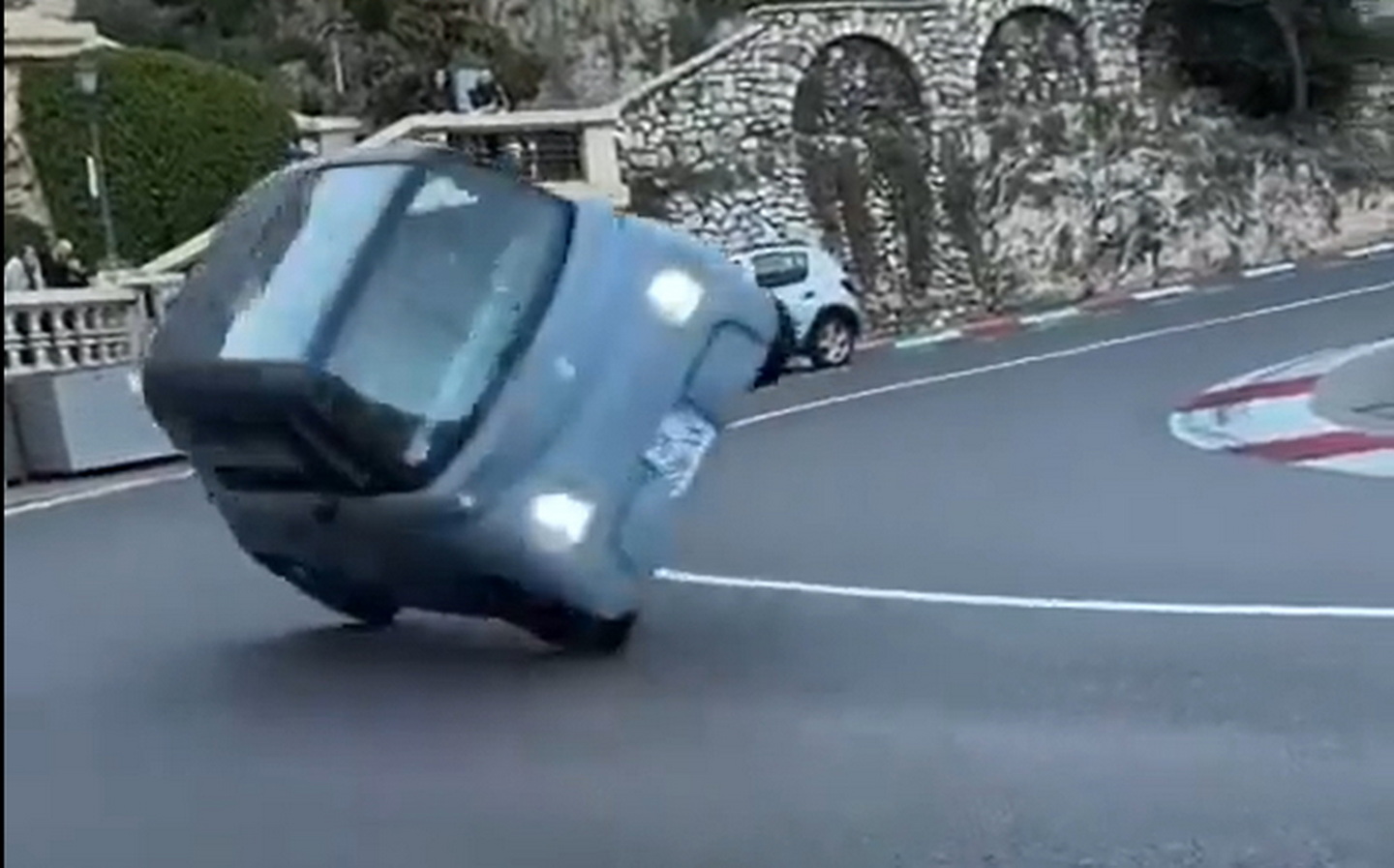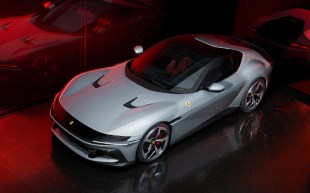How safe is the Citroën Ami after one rolled in Monaco?
It’s not technically a car at all
The safety of the Citroën Ami has been called into question after videos of one rolling over and crashing in Monaco went viral over the weekend. Particular concern was raised due to the fact that the tiny French electric vehicle was designed as an affordable way into motoring for teenage drivers.
A series of social media videos show a French-registered example of the Ami being driven at speed around the famous Grand Hotel hairpin in Monte Carlo that forms part of the Monaco Grand Prix race circuit.
One video shows the Ami leaning over precariously while it is driven up the steep hill. Another shows the return downhill journey, where the vehicle appears to be carrying increased speed. The Ami tips over onto its side and slides along the road briefly before coming to an abrupt halt by hitting solid bollards on the outside of the corner. Onlookers, who were filming the event, rush to help those inside the car.
Neither the driver nor the passenger were hurt in the incident.
What is the Citroën Ami?
The crash in Monaco is all the more surprising given the low performance of the Ami. It’s a tiny two-seater measuring 2.41m long by 1.39m wide, designed to bring mobility to the masses with a no frills approach to performance, technology and comfort. With a roof and doors it does offer weather protection and comes with a heater, thought it isn’t a quick car at all.
Designed for urban use, it’s powered by a 6kW electric motor, which sends up to 8bhp to the front wheels. The top speed is limited to just 28mph, though road testers in the UK have seen an indicated 31mph on downhill stretches.
The Ami features a small, lightweight lithium-ion battery pack with a 5.5kWh energy capacity. Theoretically that allows a range of up to 47 miles at low speeds, and it can be charged up in about three hours from a suitable three-pin household plug socket.
It’s a quadricycle, not a car
The Citroën Ami was designed to fit into the voiture sans permis (VSP – ‘car without licence’) vehicle category in France and other European countries. The classification name is misleading as only those born before the last day of 1987 can drive these vehicles without any licence in France.
Nonetheless, the Ami was designed with teenagers in mind, as those as young as 14 can drive it on the road so long as they go through a defined level of driver training and obtain what is effectively the same as a provisional driving licence in the UK. In France and other countries where these rules apply, insurance is mandatory, but it is inexpensive.
The same vehicle classification does not exist in the UK, so the Ami falls under quadricycle rules. Citroën UK states that the Ami is considered a light quadricycle by the DVLA and that to drive an Ami legally in the UK, a rider needs either an AM moped licence or a full category B licence. That means people as young as 16 could legally drive the Ami.
Is the Citroën Ami sold in the UK?
Although Citroën didn’t originally intend to offer the Ami for sale in the UK, it bowed to public and media pressure and now sells it in four different two-seat specifications and a single “Cargo” guise. Prices start at £7,695 on the road for the entry-level two-seater, or from under £100 per month on finance.
The Ami Cargo, targeted at urban businesses, is priced at £7,995 and features additional storage space in lieu of a passenger seat, plus a cover for the same.
It should be noted that all examples of the Ami have the steering wheel on the left and a very basic specification.
All quadricycles such as the Ami that are designed for use on the road must meet legal standards and drivers must ensure they are properly registered, taxed and insured before use. By law they are not allowed on pavements or motorways, and any roads with a speed limit above 30mph are not recommended for the Ami.
How safe is the Citroën Ami?
Quadricycles are not subject to the same crash test procedures as normal cars. In fact, quadricycles do not have to be crash tested at all before they are sold to the public.
The Euro NCAP safety body has crash-tested a selection of quadricycles in the past, but urges users of its data to only use it to compare quadricycles with other vehicles of the same type. It clearly suggests that quadricycles offer less protection to their occupants than regular cars do: “It is expected that they would all perform very poorly when tested using Euro NCAP’s regular procedures for passenger cars.”
Euro NCAP points out that very few quadricycles feature airbags or driver assistance technology to prevent a crash from happening in the first place. The Citroën Ami is one sold without airbags and has not been tested by Euro NCAP.
However Citroën has always said the Ami should not be compared with cars in terms of safety, rather it should be seen as a better-protected alternative to a motorised scooter, moped, e-bike or e-scooter.
When asked about the rollover in Monaco, Citroën UK told Driving.co.uk:
“A video of a driver getting their Citroën Ami to overturn through a hairpin bend in Monaco has spread across social media. We are relieved to know that the driver and passenger did not suffer any bodily harm and that they are safe and sound.
“Citroën Ami has been designed as an alternative to walking, cycling, using the bus, or riding a scooter or e-bike – it’s not a car. Drivers should always act responsibly, respecting the physical capabilities of Ami and the rules of the road.
“Citroën Ami has not been engineered to be driven aggressively or raced. This accident occurred on a famous hairpin bend that forms part of the F1 circuit, known to be challenging even for experienced race drivers.”
Related articles
- After reading about the Citroën Ami crashing in Monaco, you might like to read about the ULEZ being extended to all London boroughs
- Did you know that James May has an electric scooter?
- Or read about the delayed decision on e-scooter legality in the UK
Latest articles
- Sci-fi inspired Ferrari 12Cilindri replaces 812 Superfast, powered by 819bhp unassisted V12 engine
- New Renault Symbioz adds to French carmaker’s fresh crossover SUV assault
- Red Bull confirms Adrian Newey’s departure, but where next for the F1 designer?
- Lotus shows off its work on British Cycling’s Paris Olympics bicycle
- New Aston Martin Vanquish to get V12 engine with 824bhp
- Cupra updates Leon and Formentor with sharp styling and longer-range hybrids
- Extended test: 2023 Vauxhall Astra Sports Tourer GS PHEV
- Omoda 5 prototype review: Bargain family SUV is solid first effort for new Chinese brand
- Dacia Duster 2024 review: Rugged, affordable SUV modernised with electrification and quite the glow up














